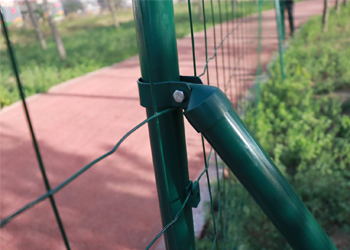metal ties for chain link fence
Nov . 05, 2024 15:06
Understanding Metal Ties for Chain Link Fences
When it comes to installing a chain link fence, one of the often-overlooked components is the metal ties. These sturdy little pieces play a crucial role in ensuring that the fence remains robust, secure, and long-lasting. In this article, we will explore the significance of metal ties, their types, installation methods, and the benefits they offer to homeowners and businesses alike.
What Are Metal Ties?
Metal ties are typically made from galvanized steel or other weather-resistant materials. They are designed to hold the chain link fabric to the fence framework, which usually includes posts and rails. The primary function of these ties is to create a stable connection that prevents the chain link fabric from sagging or becoming detached over time. This stability contributes significantly to the overall durability and appearance of the fence.
Types of Metal Ties
There are several types of metal ties used in chain link fence installations
1. Wire Ties These are the most common type of metal ties used for chain link fences. They are flexible and can be twisted around the fence fabric and framework. Wire ties come in different gauges, typically ranging from 11 to 14, with heavier gauges providing greater strength.
2. Clips Metal clips are another option for securing chain link fabric. These are typically made from galvanized steel and come in various shapes and sizes. They are designed to be used with specific types of fence frameworks, providing a secure and robust connection.
3. Tension Bands These are larger metal fittings used at the terminal posts to secure the chain link fabric. They are crucial for areas of high tension, ensuring the fabric remains taut and secure against strong winds or impacts.
Installation of Metal Ties
Installing metal ties is a straightforward process, but it requires attention to detail for optimal results. Here’s a step-by-step guide to help you through the installation
1. Prepare Your Materials Gather all necessary materials, including chain link fabric, posts, rails, and the metal ties you plan to use. Ensure you have the right tools handy, such as wire cutters and pliers.
metal ties for chain link fence

2. Attach the Framework Begin by setting up the posts and rails according to your fence layout. Make sure everything is level and securely anchored in the ground.
3. Position the Chain Link Fabric Unroll the chain link fabric and position it against the framework. It’s important to maintain tension while doing this to prevent sagging.
4. Secure the Fabric with Metal Ties Start at one end of the fence and begin using your wire ties or clips. Wrap or attach them securely around the chain link fabric and the framework. If using wire ties, twist them tightly to ensure a strong connection, while clips should be fastened according to the manufacturer’s instructions.
5. Check for Tension and Stability After securing the entire length of chain link to the framework, step back and visually inspect the fence. Adjust any areas that may be sagging, and ensure that all metal ties are tight and secure.
Benefits of Using Metal Ties
The incorporation of metal ties in a chain link fence provides several benefits
- Durability Metal ties, especially those made from galvanized steel, are resistant to rust and corrosion, ensuring your fence remains strong and stable for years.
- Security A well-secured chain link fabric through metal ties enhances the overall security of your perimeter, making it difficult for intruders or animals to breach.
- Aesthetic Appeal Properly tied and tensioned fabric maintains the neat appearance of the fence, which is important for residential properties and businesses alike.
- Cost-Effectiveness Metal ties are affordable and minimize the need for more expensive repair and maintenance, making them a smart investment for fence longevity.
In conclusion, metal ties are an essential element of any chain link fence installation. They contribute significantly to the fence’s stability, security, and appearance. By understanding their types, proper installation methods, and benefits, homeowners and businesses can ensure their chain link fences serve their intended purpose effectively for years to come. Whether you are installing a new fence or maintaining an existing one, don’t underestimate the power of these small yet mighty components.




















